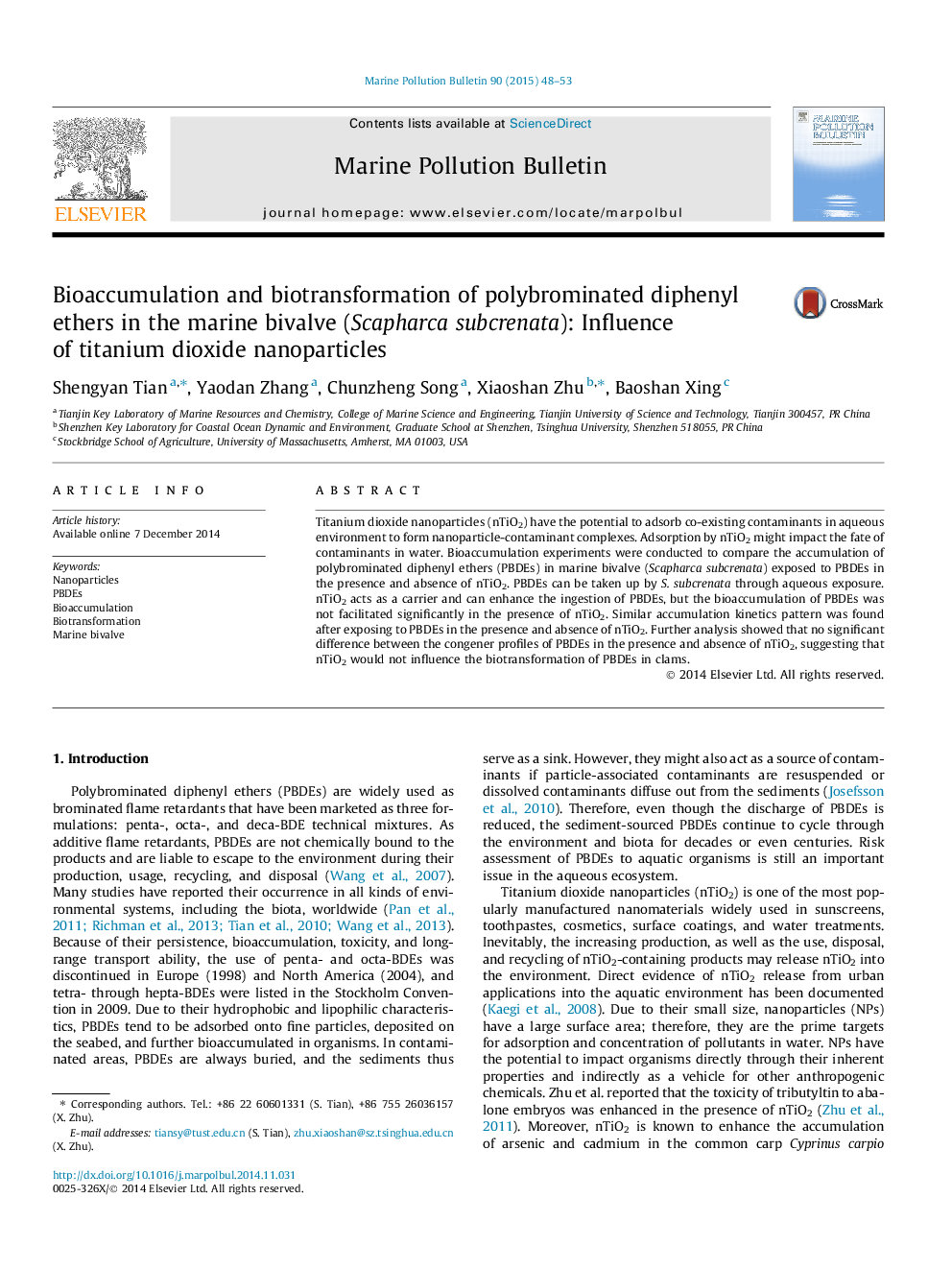| Article ID | Journal | Published Year | Pages | File Type |
|---|---|---|---|---|
| 6357172 | Marine Pollution Bulletin | 2015 | 6 Pages |
Abstract
Titanium dioxide nanoparticles (nTiO2) have the potential to adsorb co-existing contaminants in aqueous environment to form nanoparticle-contaminant complexes. Adsorption by nTiO2 might impact the fate of contaminants in water. Bioaccumulation experiments were conducted to compare the accumulation of polybrominated diphenyl ethers (PBDEs) in marine bivalve (Scapharca subcrenata) exposed to PBDEs in the presence and absence of nTiO2. PBDEs can be taken up by S. subcrenata through aqueous exposure. nTiO2 acts as a carrier and can enhance the ingestion of PBDEs, but the bioaccumulation of PBDEs was not facilitated significantly in the presence of nTiO2. Similar accumulation kinetics pattern was found after exposing to PBDEs in the presence and absence of nTiO2. Further analysis showed that no significant difference between the congener profiles of PBDEs in the presence and absence of nTiO2, suggesting that nTiO2 would not influence the biotransformation of PBDEs in clams.
Related Topics
Physical Sciences and Engineering
Earth and Planetary Sciences
Oceanography
Authors
Shengyan Tian, Yaodan Zhang, Chunzheng Song, Xiaoshan Zhu, Baoshan Xing,
